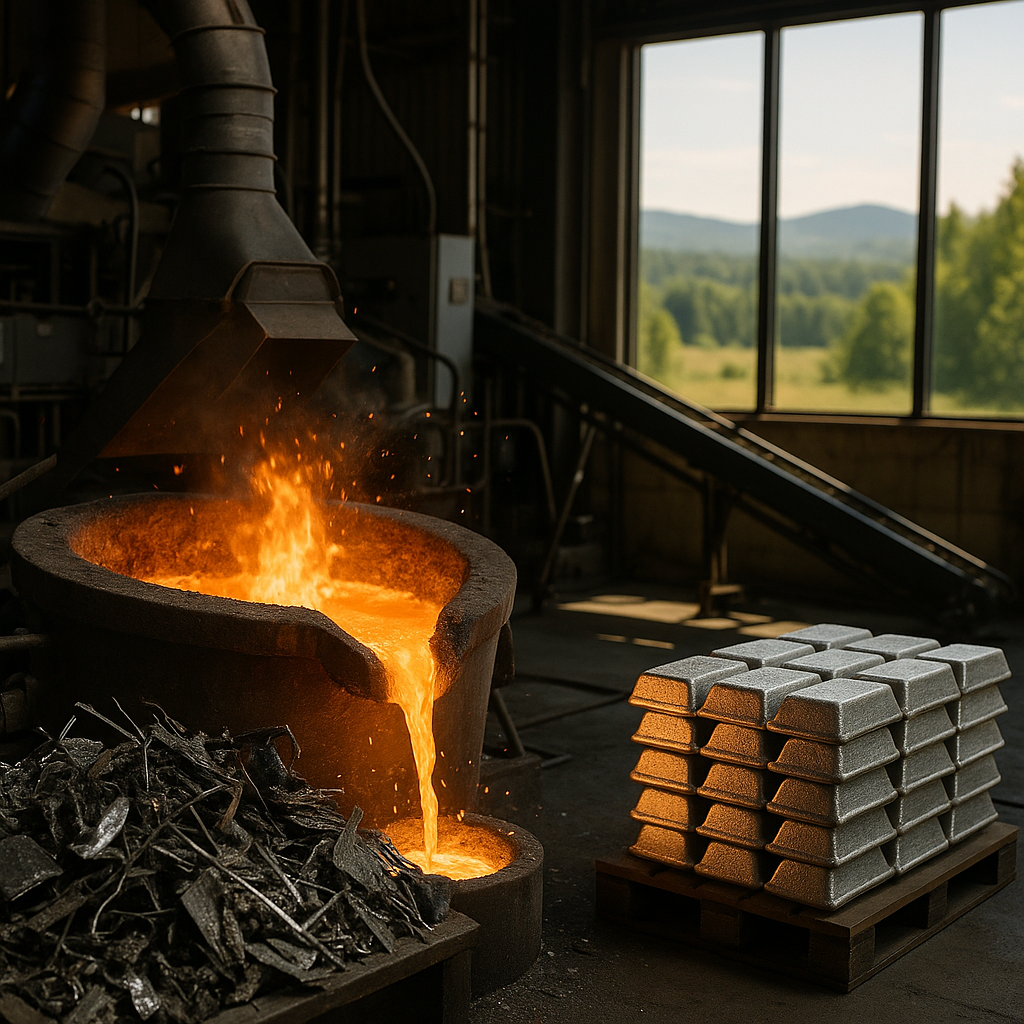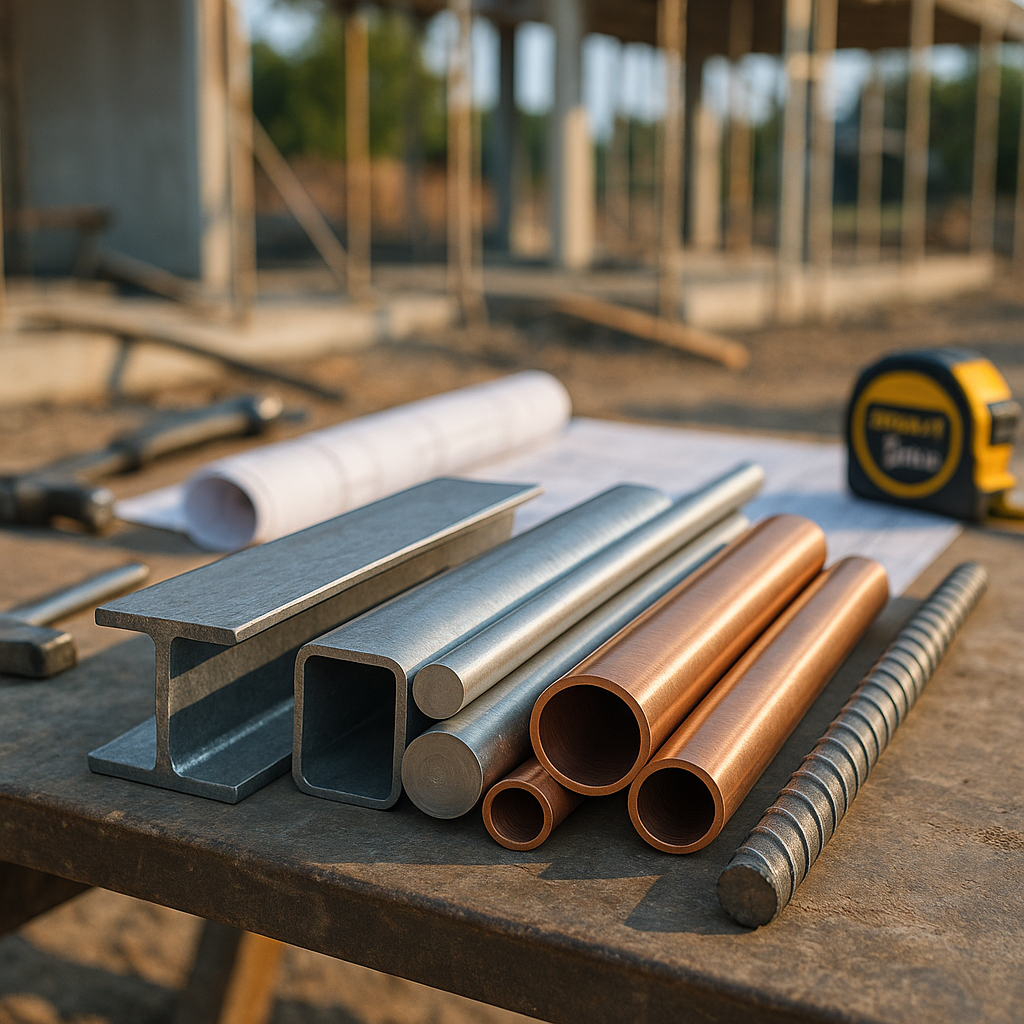5901 Botham Jean Blvd, Dallas, TX 75215
What is the Environmental Impact of Scrap Metal?
July 9, 2025Did you know recycling just one ton of steel saves enough energy to power an average home for more than six months? Scrap metal recycling is a powerful tool in combating environmental degradation. Every piece of metal recycled is a significant step toward reducing the massive carbon footprint associated with metal production.
Scrap metal recycling plays a vital role in waste management by diverting millions of tons of metal from landfills annually. By recycling metal instead of mining for new materials, we significantly reduce the need for environmentally damaging extraction processes. Mining operations typically cause deforestation, habitat destruction, and soil erosion that can permanently alter landscapes.
Water conservation is another crucial benefit of metal recycling. Traditional metal production requires substantial amounts of water, often contaminating local water sources with heavy metals and chemicals. Choosing recycled metals helps preserve water quality and protects aquatic ecosystems that would otherwise suffer from the pollutants associated with virgin material production.
How Does Scrap Metal Recycling Reduce Greenhouse Gas Emissions?

Metal production from raw materials is incredibly energy-intensive. Mining, extracting, refining, and processing virgin metals require substantial power and generate significant carbon dioxide emissions. In contrast, recycling existing metals greatly reduces these environmental impacts.
When manufacturers use recycled scrap metal instead of raw materials, they skip the most energy-consuming stages of metal production, resulting in substantially lower greenhouse gas emissions across the entire manufacturing process.
The energy savings from scrap metal recycling directly translate to reduced carbon emissions. For example, according to the U.S. Environmental Protection Agency, recycling aluminum cans saves 95% of the energy needed to produce new aluminum from bauxite ore. This remarkable efficiency prevents the emission of 7,850 pounds of carbon dioxide per ton of aluminum recycled.
Steel recycling offers similarly impressive benefits. Producing steel from recycled materials uses about 60% less energy than creating it from iron ore, making metal recycling one of the most effective strategies for reducing industrial carbon emissions.
Here are some key statistics highlighting the greenhouse gas reduction benefits of scrap metal recycling:
- Recycling aluminum saves up to 95% of the energy required for primary production.
- Steel recycling reduces energy consumption by approximately 60%.
- Copper recycling saves up to 85% of the energy needed for production from raw ore.
- Recycling one ton of steel prevents about 1.5 tons of CO2 emissions.
- According to the EPA, metal recycling cuts greenhouse gas emissions by 29 million tons of carbon dioxide annually — equivalent to removing 6.3 million cars from the road.
Beyond these direct energy savings, scrap metal recycling also eliminates the emissions associated with mining operations. Traditional metal extraction involves heavy machinery, transportation fleets, and processing equipment that release carbon dioxide. The environmental damage from these activities includes habitat destruction, soil erosion, and water pollution, all contributing to broader climate impacts.
By fostering a circular economy for metals, recycling programs help combat climate change while conserving valuable natural resources. Each ton of recycled metal not only saves energy but also significantly reduces the carbon footprint of the metal industry.
What Are the Benefits of Diverting Scrap Metal from Landfills?
Scrap metal in landfills undergoes a decomposition process lasting centuries. Unlike organic materials that decompose quickly, metals can persist for hundreds of years, releasing toxic substances into the surrounding soil and groundwater systems.
These leached contaminants cause serious environmental problems. Heavy metals like lead, mercury, and cadmium from discarded electronics and industrial waste infiltrate soil layers, rendering land unusable for agriculture. Contaminated runoff eventually reaches water sources, threatening aquatic ecosystems and potentially affecting human water supplies.
The impact extends beyond contamination. Metal items in landfills occupy valuable space that could be used for waste that cannot be recycled. As communities face challenges identifying new landfill sites, diverting recyclable metals is crucial for effective waste management.
Recycling scrap metal is a powerful solution to these issues. By processing metals for reuse, we prevent harmful substances from entering soil and water systems. This protection extends to wildlife habitats and human communities reliant on clean water resources. The Environmental Protection Agency notes that recycling aluminum saves 95% of the energy needed to produce new aluminum from raw materials, demonstrating the multiple environmental benefits of diversion.
Besides environmental protection, diverting scrap metal creates economic opportunities. The scrap metal recycling industry generates jobs in collection, processing, and manufacturing sectors. By keeping these materials in circulation, we support a circular economy that maximizes resource value while minimizing environmental harm.
Landfill operators also benefit from metal recycling programs. Removing dense, heavy metals from the waste stream extends the operational lifespan of existing facilities, delaying the costly and often contentious process of establishing new landfills.
How Does Scrap Metal Recycling Conserve Natural Resources?

Scrap metal recycling significantly reduces the need for mining and extracting new metal ores. By reusing existing metals, we decrease the demand for raw materials like iron ore for steel and bauxite for aluminum. This conservation extends the lifespan of current mines, preserving valuable natural resources for future generations.
The mining process required to extract new metal ores is resource-intensive and environmentally damaging. Each ton of recycled steel saves approximately 2,500 pounds of iron ore, 1,400 pounds of coal, and 120 pounds of limestone. For aluminum, recycling uses 95% less energy than producing it from virgin materials, making it one of the most efficient recycling processes available.
Mining operations cause massive environmental disruption. They strip away topsoil, remove forest cover, and permanently alter landscapes. These activities fragment natural habitats and disrupt wildlife corridors essential for many species’ survival. By reducing the need for new mining operations, scrap metal recycling helps protect these critical ecosystems from destruction.
The environmental impacts of mining go beyond visible landscape changes. Extracting metal ores releases harmful substances, contaminating soil and water. Acid mine drainage, a common byproduct of mining, contains heavy metals and sulfuric acid that can poison waterways for decades. This pollution affects not only aquatic life but also communities relying on these water sources.
Mining activities significantly contribute to soil erosion. Without proper vegetation cover, exposed soil washes away during rainfall, clogging waterways with sediment and damaging aquatic habitats. This erosion can lead to increased flooding, reduced water quality, and a loss of agricultural productivity in surrounding areas.
Biodiversity preservation is another crucial benefit of scrap metal recycling. Mining often occurs in regions with high biodiversity, threatening numerous plant and animal species. Some mining sites overlap with protected areas or ecosystems that harbor rare and endangered species. By reducing the demand for new mining, recycling helps safeguard these biodiversity hotspots.
The water conservation aspect of metal recycling is substantial but often overlooked. Traditional metal production consumes enormous amounts of water for processing and cooling. Recycling metal uses significantly less water—in some cases, the reduction can reach up to 90% compared to primary production. This water conservation is increasingly important as many regions face water scarcity challenges.
Conclusion: The Far-Reaching Benefits of Scrap Metal Recycling

Scrap metal recycling is one of the most effective methods for promoting environmental sustainability. By diverting valuable metals from landfills, we collectively reduce greenhouse gas emissions, conserve finite natural resources, and minimize pollution. Recycling aluminum uses up to 95% less energy than producing it from raw materials, while steel recycling saves approximately 75% of the energy required for new production.
Choosing to recycle metals instead of discarding them significantly contributes to climate change mitigation. Each ton of recycled metal prevents mining-related habitat destruction, reduces energy consumption, and prevents harmful substances from contaminating soil and groundwater. These benefits extend beyond individual actions, creating a cumulative positive impact that helps protect ecosystems and preserve resources for future generations.
Ready to make a difference with your scrap metal? Contact Okon Recycling at 214-717-4083 for all your recycling needs. Our team of experts will help ensure your materials are processed efficiently and responsibly, maximizing both environmental benefits and the value of your scrap metal.
